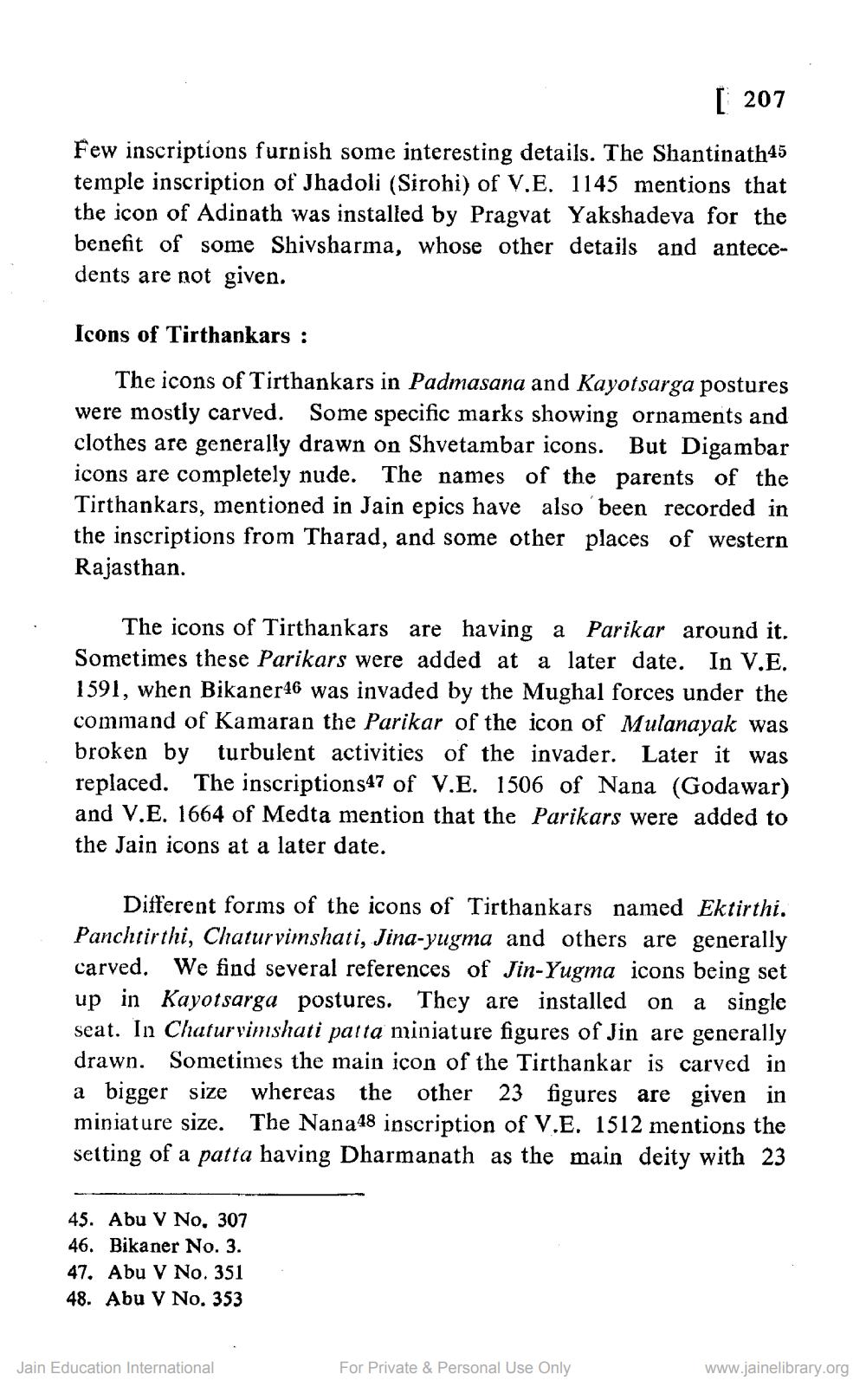________________
[ 207
Few inscriptions furnish some interesting details. The Shantinath45 temple inscription of Jhadoli (Sirohi) of V.E. 1145 mentions that the icon of Adinath was installed by Pragvat Yakshadeva for the benefit of some Shivsharma, whose other details and antecedents are not given.
Icons of Tirthankars :
The icons of Tirthankars in Padmasana and Kayotsarga postures were mostly carved. Some specific marks showing ornaments and clothes are generally drawn on Shvetambar icons. But Digambar icons are completely nude. The names of the parents of the Tirthankars, mentioned in Jain epics have also been recorded in the inscriptions from Tharad, and some other places of western Rajasthan.
The icons of Tirthankars are having a Parikar around it. Sometimes these Parikars were added at a later date. In V.E. 1591, when Bikaner46 was invaded by the Mughal forces under the command of Kamaran the Parikar of the icon of Mulanayak was broken by turbulent activities of the invader. Later it was replaced. The inscriptions47 of V.E. 1506 of Nana (Godawar) and V.B. 1664 of Medta mention that the Parikars were added to the Jain icons at a later date.
Different forms of the icons of Tirthankars named Ektirthi. Panchtirthi, Chaturvimshati, Jina-yugma and others are generally carved. We find several references of Jin-Yugma icons being set up in Kayotsarga postures. They are installed on a single seat. In Chaturvimshati patta miniature figures of Jin are generally drawn. Sometimes the main icon of the Tirthankar is carved in a bigger size whereas the other 23 figures are given in miniature size. The Nana48 inscription of V.E. 1512 mentions the setting of a patta having Dharmanath as the main deity with 23
45. Abu V No, 307 46. Bikaner No. 3. 47. Abu V No. 351 48. Abu V No. 353
Jain Education International
For Private & Personal Use Only
www.jainelibrary.org




